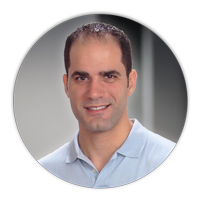This month, Itential participated in the Fall Open Networking User Group (ONUG) event in NYC, where over 1000 IT and industry executives took part in finding ways to solve enterprises’ biggest networking challenges.
As always, it was great to spend the first day before the big event started collaborating with the Working Groups. It was exciting to see the addition of a couple of new working groups to the lineup based on feedback from the Spring event: AIOps for Hybrid Multi-Cloud and Orchestration & Automation (O&A). For Itential, being a leader in the automation space, it was great to see the birth of the O&A working group as a result of the ONUG Spring 2019 use case voting.
During the event, ONUG received overwhelming feedback from the customer community about the challenges of onboarding SD-WAN and the need for orchestration and automation. With so much to do, the big question is where to start as organizations are trying to adopt SD-WAN for business benefits but are struggling with larger branch deployments in as many as hundreds and thousands of sites. Attendees also indicated that they have hybrid multi-cloud environments, but little to no automation in place and want to move towards automation in efforts to optimize operational cost. Struggling with manual consumption, consumers end up swivel chairing, drawing out fulfillment SLAs, and putting quality at risk.
With this in mind, Itential felt it was important to demonstrate how network engineers and software developers can both participate in network automation by leveraging their existing skillsets in our ONUG Fall 2019 Proof of Concept (PoC).

During this session, Itential successfully demonstrated a PoC under the ONUG O&A Working Group to showcase how the Itential Automation Platform (IAP) could be used to instantiate cloud infrastructure across multiple Infrastructure as a Service (IaaS) providers, normalize integrations into other systems (such as Netbox, GitLab, Slack, Terraform, and Ansible), and achieve additional configuration validation through Git Pipelines like Argo. Terraform offers a standardized approach for cloud infrastructure deployments across AWS, Azure, and GCP and Ansible has the perfect modules for network configuration into Cisco IOS, so naturally we wanted to orchestrate this automation using both of those tools.
Today’s automation strategy isn’t one tool to rule them all, it’s about leveraging the right tool for the right job. Next, in between Terraform and Ansible we took the opportunity to commit configuration into GitLab so that a Git Pipeline could perform validation through tools like Config Validator and testing instead of just blasting configuration against the network and hoping the box doesn’t choke. Plus, why wouldn’t we want to leverage the vast set of tools that Git Pipelines have access to for testing and validation? Software principles that software developers follow can complement existing network engineering processes and ultimately contributing towards a higher quality implementation. Remember, the goal is not to force software developers to become network engineers or vice versa, but to enable network automation contribution from both of those disciplines.
You can check out our full PoC, “Infrastructure as Code for Cloud Network Automation,” to see it in action.
We are looking forward to the next ONUG event in London, December 2-3 at CodeNode. If you are attending, drop us a line. We would love to meet with you.
Tags: Network Orchestration ONUG SD-WAN


